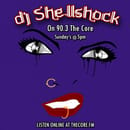In April 2012, Tupac performed for the first time in over 15 years. How is that possible if he’s dead? A holographic image of the legendary rapper was created for Coachella. Tupac’s holographic appearance at Coachella was emotional for some, exciting for others.
In Japan and South Korea, hologram concerts have become widespread. Animated characters come alive on stage, singing and dancing. Hatsune Miku, one famous character, performs hundreds of thousands of songs in Japan and is followed by millions of fans worldwide. One of her songs even reached Top 10 world music rankings on Itunes. If an animation can attract these many followers, imagine how popular a Tupac hologram can be!
In a brief message, Dr. Dre explained that he didn’t plan to launch a Tupac tour. Creating a hologram is a huge project and each set takes time to produce. Tupac’s, only a few minutes long, took several months to create. Crafting the likes of a real human being from every angle to every edge, figuring out how to turn a body into a 360° model is more complex than a simple cartoon animation. Given that all this was said seven years ago and no other live performances have happened, the possibility of another Tupac concert may be gone.
Some people worry that using artificial sounds compromises the quality of live music. Since audiences will never be able to experience Tupac live, why not utilize technology to create an experience that is as realistic as possible?
While the cost of the technology carries a hefty price tag, people would be willing to pay to see Tupac, making it a worthwhile investment. A holographic Tupac can tour multiple cities at once. It also cuts down on security and other risks involved with public figures. Additionally, there wouldn’t be a need to pay for an artist’s salary (not to say that Tupac wouldn’t deserve one).
The Coachella performance was an experiment; a chance to see how people would react and what could be improved. The majority of Tupac fans loved the idea and would pay to see his concert. After each performance, producers tweak the details to improve future performances. Do the hologram’s physical actions resemble those of Tupac? What can be done to make the computer-generated performer look more life-like and less robotic? How can other elements such as other artists or back-up dancers be synchronized with the hologram? Will it be possible for the hologram to interact with the audience?
Through technology, we can revive Tupac’s music, introduce it to the younger generation, and spread his message. A leader and an activist, he promoted unity, equality, and civil rights, and condemned racism and police brutality. Immortalizing him and his beliefs will enlighten us all.
Holographic concerts are the future to bringing back the past. What are you waiting for Dre? Bring Pac back!


